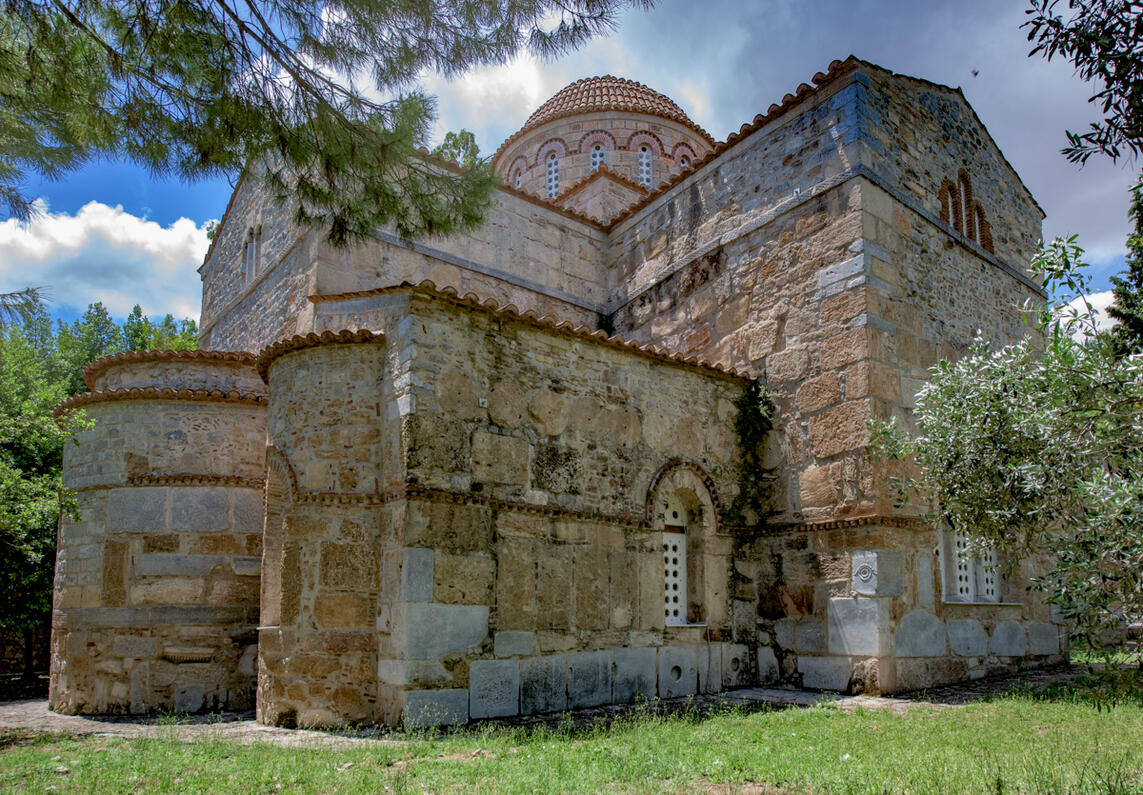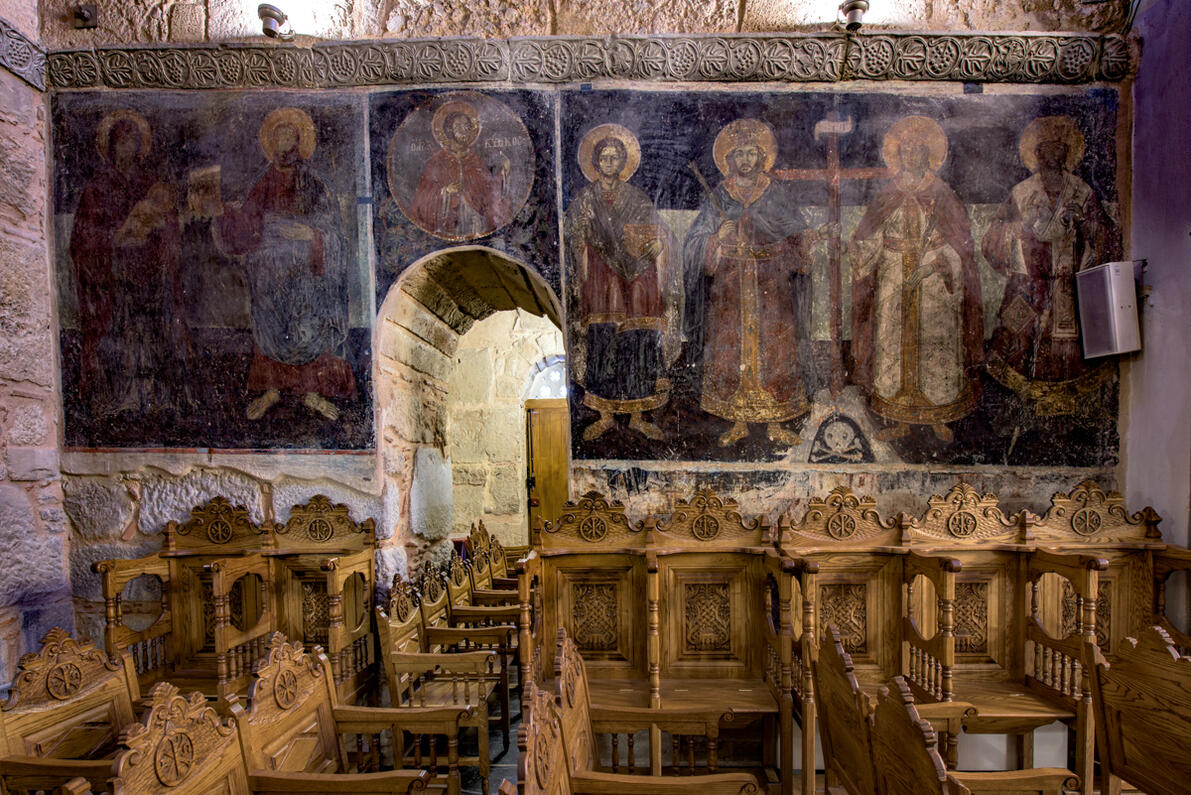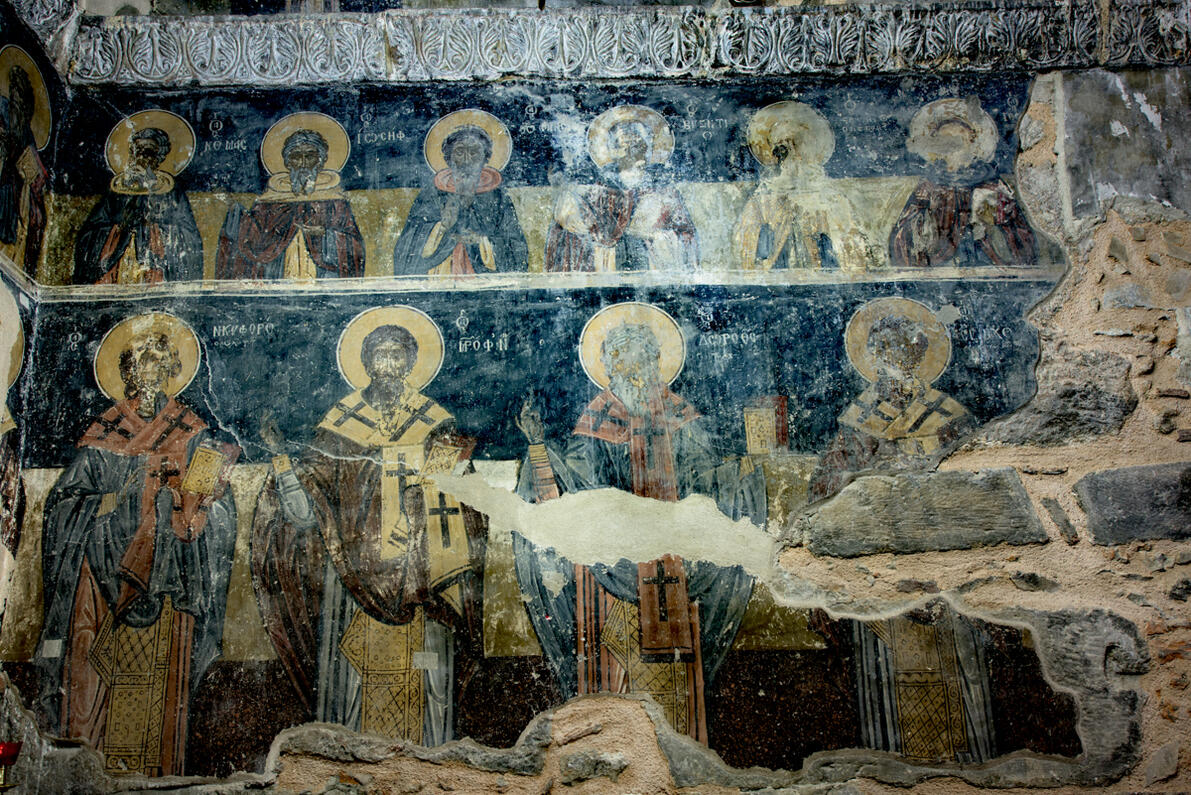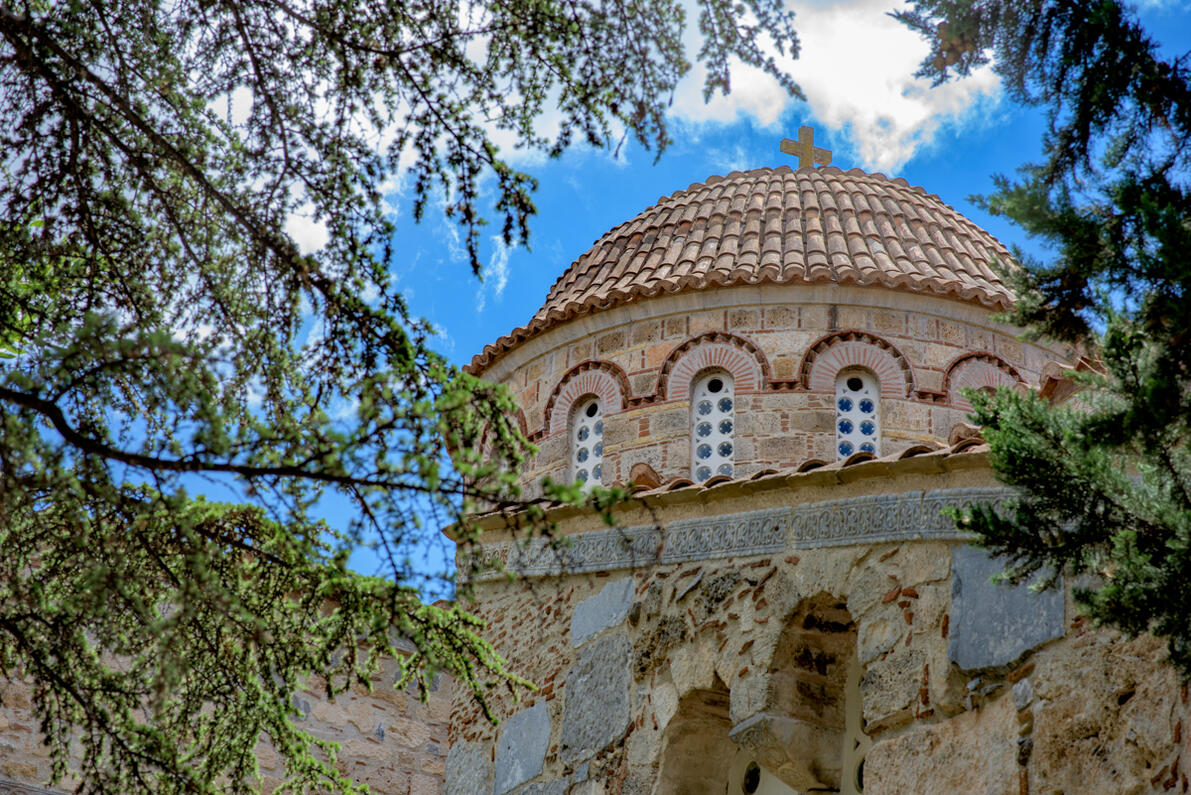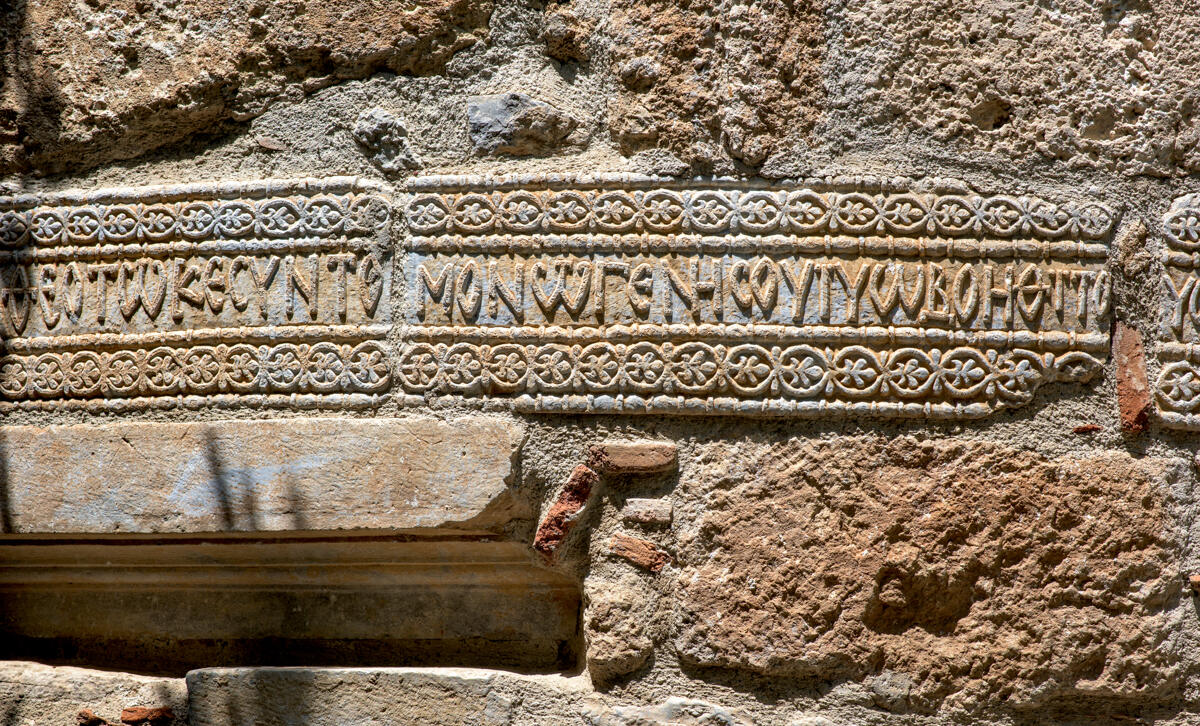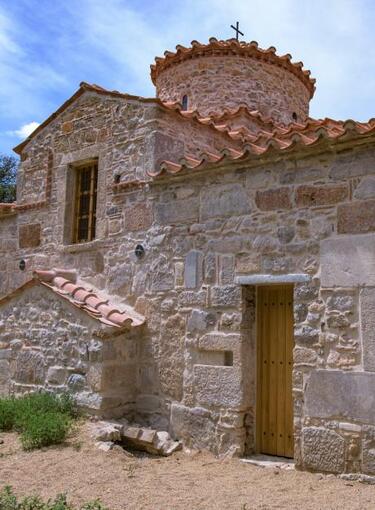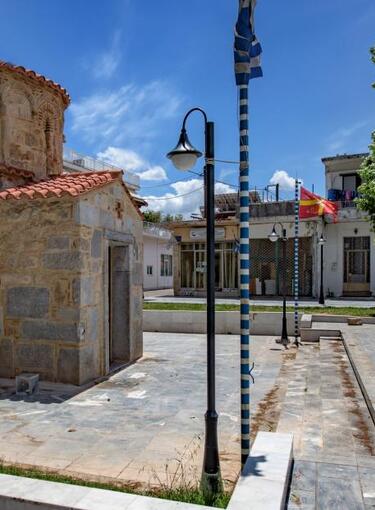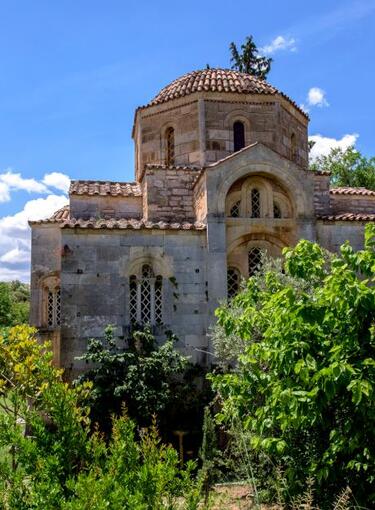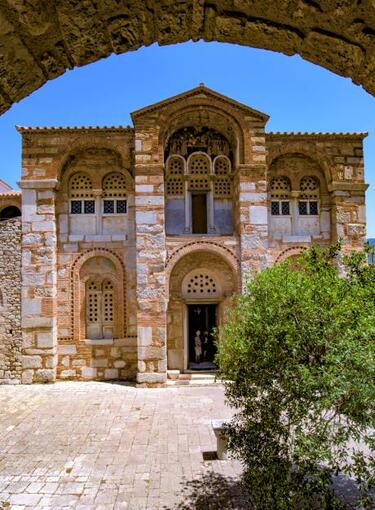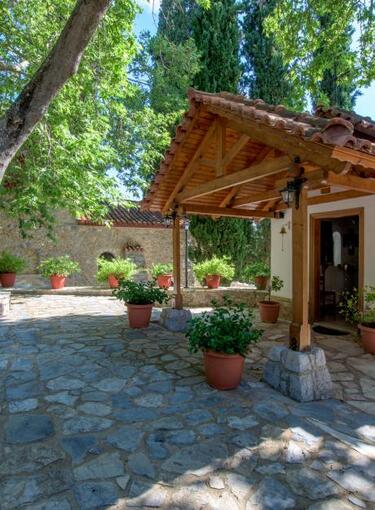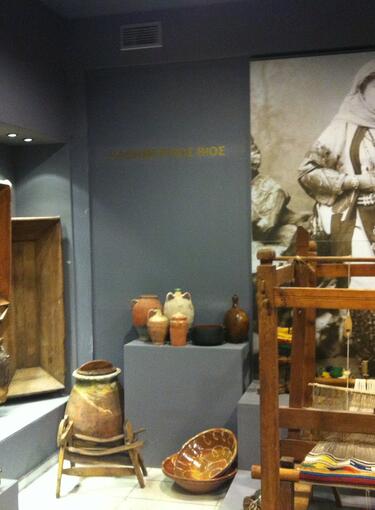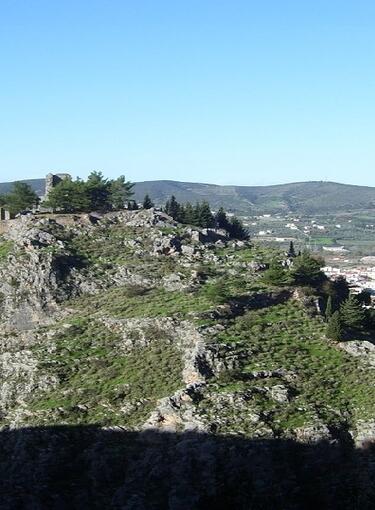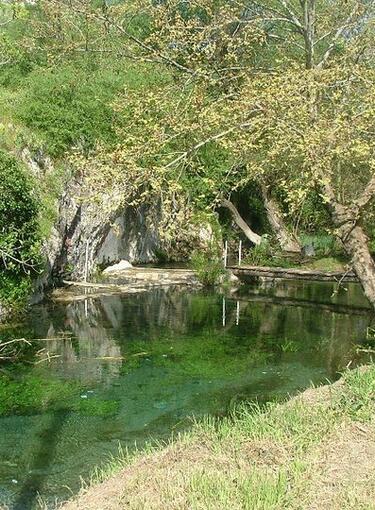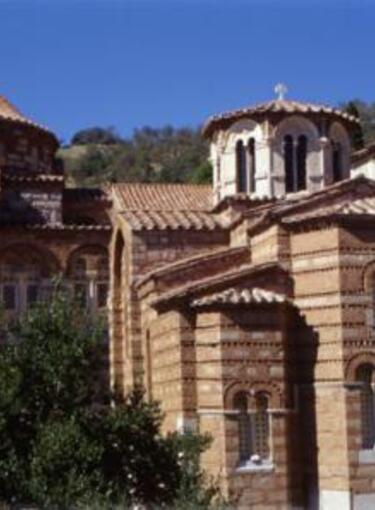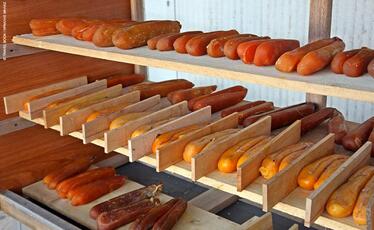Historic Temples
In Orchomenos of Boeotia, near the ancient ruins, is the church of Panagia Scripou, the most important monument of the 9th century in Central Greece, which is a landmark for Byzantine architecture, now only because of his style but also because of the important inscriptions that provide valuable information regarding its history. They are probably the reason why it was named “Scripou”, from the Latin word scriptus, which means “written”.
The church is built over the ruins of buildings of the Mycenaean Period and ancient temples. It was constructed in 874 by protospatharios Leo, who was the owner of the area. It is dedicated to the Dormition of the Virgin Mary, while the two chapels that have been shaped on the sides of the altar area are dedicated to the two greatest Apostles, Paul and Peter. It belonged to a monastery complex, from which nowadays only the gate and a wing of cells survive. The monastery functioned for many centuries, it became famous and was the most important intellectual centre of the whole area, giving its name to the settlement itself, which in the Late Byzantine Period and during the period of the Turkish occupation was called Scripou. It was dissolved in the end of the 19th century and the church became a parish one. In modern times it was related to the rescue of Orchomenos from the retaliation of the German troops, on the 10th of September 1943, which was attributed to an intervention by the Virgin Mary. In 1996 the church suffered serious damages from a fire, and has been partly restored.
Architecturally, it belongs to the so-called “transitional type”, that is the transition from the Old Christian domed basilica to the cross-in-square church of the Middle Byzantine period. Its ground plan resembles a three-aisled basilica, whose walls are divided by walls instead of columns. On the east it ends to three semi-circular arches and on the west there is a narthex with a propylon. Due to the combination of various architectural elements, the monument does not appear harmonious. For the construction of its walls they have used ancient materials, while for the first time they use here the dentil course for the decoration of the exterior of the church. Of particular interest are the sculptures that decorate the interior and the exterior of the church, which combine traditional Byzantine with eastern themes. On the southern side the impressive marble sundial survives, the oldest one of this type in Greece. At the interior of the church survive some wall paintings of the 16th and the 17th century, while parts of the initial screen are exhibited to a nearby area.
It is a parish church and it celebrates on the 15th and the 23rd of August, as well as on the 10th of September.
Informations
Additional
Date:
9th century
Celebrates:
15 August, 23 August, 10 September
Holy Metropolis:
Thebes and Levadia
Under the Supervision of:
Ephorate of Antiquities of Boeotia
Address:
Orchomenos


